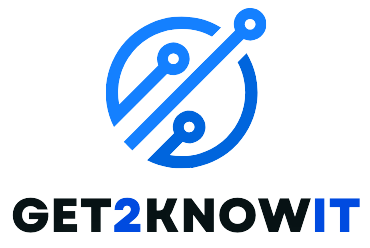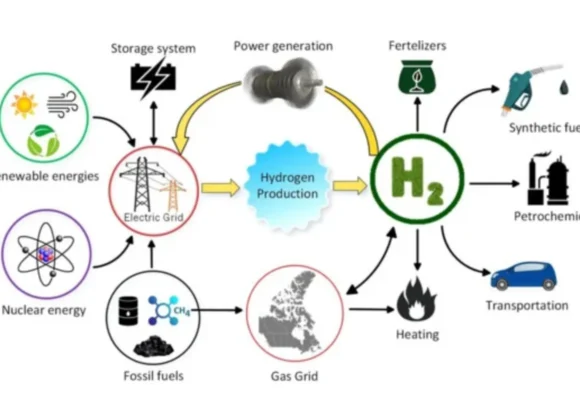In today’s cloud-powered environment, application virtual switches revolutionize network traffic management. Unlike typical switches designed for physical computers, AVS exists in the virtual domain, coexisting with your programs on the hypervisor. This virtual layer allows you to segregate and manage network traffic for individual applications. The magic is in the granular control. AVS optimizes traffic flow for each app, removing bottlenecks and lowering latency. Consider different roadways for each application, ensuring a smooth and efficient functioning.
Traditional Network Switches are Bottlenecks in the Cloud
Cloud computing has transformed IT, but traditional network switches are straining to keep up. These switches were designed for physical machines and lack the agility required for virtualized environments. Scaling apps becomes difficult owing to inflexible settings. Security is also a problem because all traffic passes via the same conduit. The proliferation of cloud computing necessitates a more dynamic and efficient network solution. Enter application virtual switches, which provide granular management, better security, and on-demand scalability the ideal combination for high-performance cloud workloads.
Core Functionalities of Application Virtual Switches
- AVS divides network traffic into different lanes for each application, avoiding congestion and assuring peak performance.
- Application Virtual Switch allows you to design and implement security policies for particular applications, hence reducing the attack surface.
- AVS makes it simple to provide and scale applications since network configurations may be changed on-demand.
- AVS includes capabilities like traffic shaping and prioritization, which ensure vital applications get the bandwidth they require.
- AVS provides better insights into application network activities, facilitating troubleshooting and performance optimization.
- The Benefits of Application Virtual Switch
Application virtual switches come to the rescue by providing a multi-lane freeway for each application. This translates into a slew of advantages: application traffic isolation improves security, optimized traffic flow boosts performance, on-demand network configuration increases agility, and granular control over each application’s network activity simplifies management.
The Different Deployment Models of AVS
There are two main methods for deploying application virtual switches (AVS) within your network infrastructure:
Integration with Hypervisors: This is the most used deployment model. Here, the AVS software is tightly integrated with your existing hypervisor platform, such as VMware vSphere or Microsoft Hyper-V. This integration enables the AVS to utilize the hypervisor’s resource management and virtual machine communication capabilities. The AVS effectively extends the hypervisor by providing a virtualized layer of network control tailored exclusively to programs operating on virtual machines.
Standalone Software Solutions: Some vendors provide standalone AVS software that does not require direct connection with a particular hypervisor. This option offers greater flexibility to enterprises with various virtualization infrastructures or those wanting a vendor-agnostic solution. Standalone AVS software often uses APIs to interface with various hypervisors and control network traffic for virtual machines throughout the infrastructure.
Real-world Use Cases
Multi-tenant Cloud Environments: In cloud systems with several tenants, AVS ensures that each tenant’s applications have separate and secure network traffic. This reduces data breaches and improves performance for all users.
Microservices Architectures: AVS is very useful for microservices because to their distributed nature. It enables fine-grained traffic management between microservices, which increases communication efficiency and overall application responsiveness.
Containerized Applications: Containerized apps are lightweight and portable, but managing their network traffic can be challenging. AVS makes this easier by offering dynamic network configurations for containers, resulting in smooth operation and scalability.
Network Function Virtualization (NFV): NFV includes virtualizing network functions that were previously performed by specialized hardware. AVS is critical in NFV deployments because it allows for efficient network traffic control across virtualized network operations.
Leading Application Virtual Switch Solutions
While a particular endorsement is not possible, here’s a look at some prominent Application Virtual Switch products from leading vendors:
VMware vSphere Distributed Switch (vDS): This comprehensive AVS solution is tightly linked with the VMware vSphere hypervisor, ensuring native support and seamless deployment. Within the vSphere environment, vDS offers capabilities such as traffic shaping, security groups, and advanced administration tools.
Microsoft Hyper-V Network Virtualization (HNV): HNV is built into Hyper-V and serves as an AVS solution for Microsoft environments. It provides basic traffic isolation and management functionality for Hyper-V-based virtual machines.
Cisco ACI Application Virtual Switch (AVS): This standalone AVS solution supports several vendors and works flawlessly with various hypervisors. Nuage VRS includes advanced capabilities such as policy-based routing, service chaining, and detailed insight into application network traffic.
Nuage Networks Nuage VRS: This standalone AVS solution supports several vendors and works flawlessly with various hypervisors. Nuage VRS includes advanced capabilities such as policy-based routing, service chaining, and detailed insight into application network traffic.
NSX-T Data Center: VMware’s NSX-T platform provides a powerful network virtualization solution that includes an integrated AVS component. For applications running in virtual or containerized environments, NSX-T AVS offers micro-segmentation, robust load balancing, and comprehensive security capabilities.
Security Considerations
Application Virtual Switch provides major security benefits through traffic separation, however there are still some problems. Malicious actors in a virtual environment may exploit weaknesses in the AVS or incorrect security policies. To reduce these risks, prioritize the implementation of tight access controls for AVS management. Use technologies like micro-segmentation in your AVS to separate essential applications and apply granular security restrictions.
The Future of Application Virtual Switches
Emerging technologies such as intent-based networking and integration with artificial intelligence will expand their capabilities. Expect AVS to become more intelligent, automating network setups depending on application requirements and dynamically modifying traffic flow to achieve peak performance.
Application Virtual Switch’ AI-powered analytics may proactively identify security concerns and potential bottlenecks. Furthermore, as containerized apps and serverless computing gain popularity, AVS will expand to smoothly control network traffic in these dynamic contexts.



